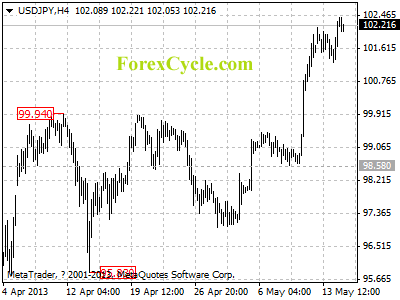By www.CentralBankNews.info Iceland’s central bank held its benchmark seven-day lending rate steady at 6.0 percent, saying “inflation is expected to reach the inflation target earlier than previously expected, with weaker output growth and a stronger krona offsetting larger wage increases and weaker productivity growth.”
However, the Central Bank of Iceland said uncertainty about the krona’s exchange rate could contribute to more persistent inflation expectations so it will be taking a more active role in the foreign exchange market to reduce fluctuations in the krona from its recent levels.
“Foreign exchange mismatches in financial institutions’ balance sheets have been reduced recently, and the exchange rate of the krona has been close to a level that, other things being equal, could be considered sufficient to bring inflation back to target in the near term,” the central bank said.
In its latest monthly bulletin, the central bank reduced its growth forecast for this year and the following years from its previous forecast from February due to lower-than-expected investment.
The central bank, which has held rates steady this year after raising them by 125 basis points in 2012, said inflation was now closer to the bank’s 2.5 percent target since 2011 and a more active role in the foreign exchange market should “facilitate speedier adjustment of the domestic price level to a stronger krona and to reduce inflation expectations.”
“In that case, the inflation target could conceivably be reached earlier than forecast, although this depends on other factors as well,” the central bank said.
This year the Icelandic krona has appreciated over 10 percent against the dollar, partly in response to central bank intervention that helped dent expectations of continued depreciation. In early May, the krona hit a high of around 116 to the U.S. dollar. Since then it has dropped almost 6 percent and was quoted at 122.8 to the dollar earlier today.
Prior to the global financial crises, the krona was roughly twice as strong, trading around 60 to the dollar. Early in the crises, Iceland’s three largest banks collapsed in 2008 and currency controls were imposed to protect the krona after it plunged in mid-2008.
The drop in the krona pushed up inflation to almost 20 percent in early 2009 but it gradually eased before accelerating in late 2011 to almost 7 percent and the central bank responded by raising interest rates. Since January 2012 inflation has been steadily declining and hit 3.3 percent in April from 3.9 percent in March, but he central bank cautioned that inflation expectations had recently risen.
The central bank expects inflation to hit its target in the first half of 2014, slightly earlier than previously forecast due to a stronger krona.
But before currency and capital controls are lifted, the central bank said it would have to review its intervention policy, along with the state of fiscal policy and consider whether wage settlements are consistent with the inflation target.
“Before decisive steps are taken to lift controls on capital outflows, it will be necessary to re-evaluate this policy,” the bank said, adding this would also apply to any changes in the monetary policy framework.
The central bank, which considers its current policy stance accommodative, said the margin of spare capacity in the economy continues to narrow despite a slowdown in the pace of economic recovery.
“It is still the case that as spare capacity disappears from the economy, it is necessary that slack in monetary policy should disappear as well,” the bank said, adding the speed of a normalisation of its policy hinges on inflation, wages, the exchange rate, fiscal policy and factor that affect demand.
In line with weaker global growth, the central bank said output has slowed and terms of trade had deteriorated and in “2013 and throughout the forecast horizon, the outlook is for output growth to be somewhat weaker than the Bank projected in February.”
Iceland’s economy has recovered strongly following the global financial crises and growth of 1.6 percent in 2012 of was among the strongest in developed countries.
In its latest monetary bulletin that was released today, the central bank said first quarter 2013 Gross Domestic Product growth is estimated at 0.3 percent quarter-on-quarter and 1.5 percent year-on-year, but then the pace is expected to ease in the second half of the year.
For 2013 the growth forecast is trimmed to 1.8 percent, down from the February forecast of 2.1 percent, due to much weaker investment than expected.
The outlook for growth in 2014 and 2015 has also been revised downward from February. Growth next year is now forecast at 3.0 percent, down from 3.7 percent, and 2015 growth is now forecast at 3.5 percent from a previous 3.9 percent, due to slower growth in domestic demand.










